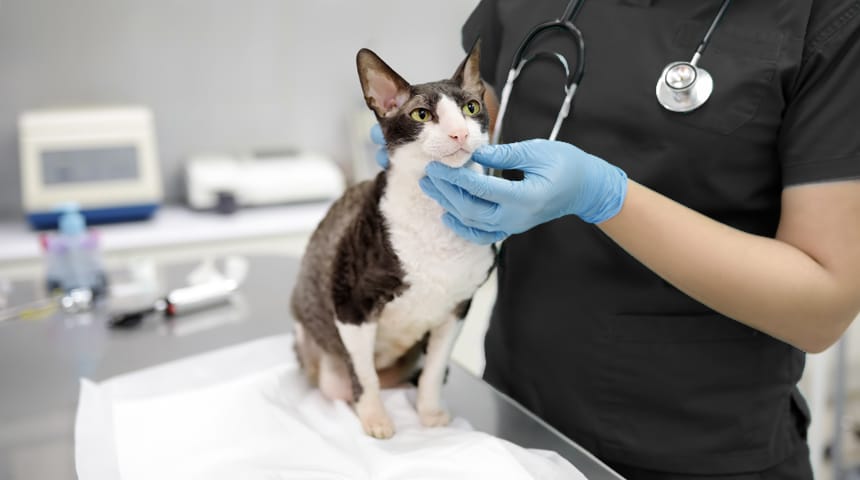Because our pets are such integral parts of our families, it is important to recognize some signs of pain that they may be experiencing.
In certain cases, the animal’s quality of life can be affected in a gradual and insidious way, such as with dental issues or arthritis in older animals.
It’s not always easy to identify the signs of animal pain. Some animals, like cats, show little to no signs of pain. Animals are incredibly adaptable and can easily hide their symptoms.
Here are some clues that your companion could present if they are in pain:
- Decreasing activity levels;
- Apathy following some physical effort;
- Hesitation to jump on a surface (cat), or to go up or down stairs;
- Difficulty getting up or settling down;
- Decrease or cessation of grooming;
- Excessive licking or chewing of a part of his body;
- Decreased to no appetite;
- Behavioural changes (less tolerant of handling, hiding, routine changes, irritability);
- Increased sleep periods;
- Visible nictitating (3rd eyelid);
- Difficulty finding a comfortable position or frequent changes in position;
- Increased vocalizations.
In small mammals, a slowing down or stopping of the digestive transit can also be observed. In birds, a swollen plumage and lowered wings may be noticed. For cats, the positioning of their eyes, head, whiskers and ears is a useful way to determine their condition. Their facial expression can tell us a lot! In dogs, their posture can tell us more: they will have a round back, low ears and low tail.
Keep in mind that some medications may not be appropriate for your pet’s problem and may actually make it worse. In addition, several human medications are toxic to our pets. Therefore, before starting any treatment, check with our team!





